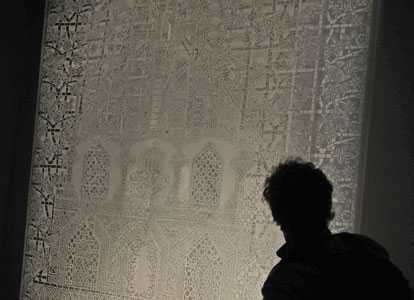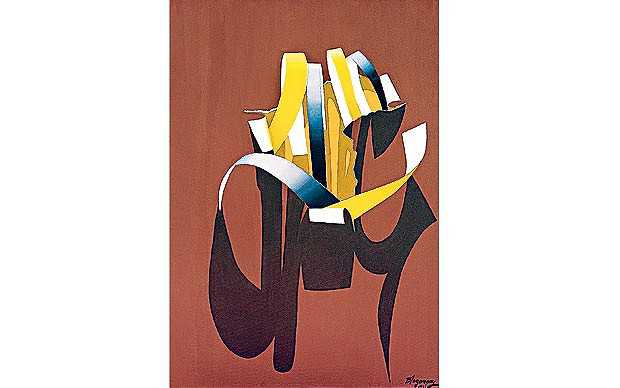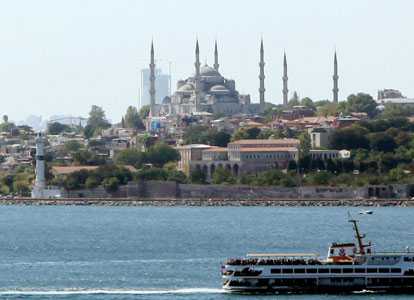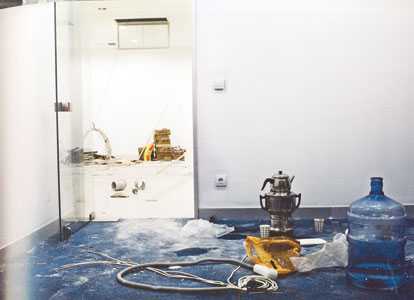November 30, 2010 by Pat Kane
As we queued for the morning’s baklavas at the European Writers’ Conference in Istanbul, I nodded at my distinguished colleague’s remarks. “Much of what is going on here is very international-literary-conference, PEN-protest standard. Statements are being made that could have been composed even before they turned up”. Then he scuttled off for a bitter coffee.
But I wasn’t going to join in his lofty disdain. I was happy to be the ingenue here, in this intriguing crowd, trying to be on “receive” much more than “transmit”. What I was beginning to sense was the sheer cultural heterogeneity of this place we call “Europe”. But also the common predicaments – from political to economic to stylistic – that beset the European writer.
In our commission on “Literature in the Digital Age”, what emerged was a picture of European writers as affected by the “digital divide” as any group in society – and perhaps more so, because of the explicit traditionalism on one side of the gulf. It was jaw-dropping to hear a minority of writers doggedly defend their right to love vellum paper, fountain pens, brutal old typewriters.
They praised how these ancient means of literary production compelled them to make important decisions about their prose: being unable to digitally cut-and-paste made their writing more urgent, raised the stakes. They demanded their right to solitude and concentration, to preserve the moment of witness, to be diligent crafters of language.
This was a transnational appeal, from Icelandics, Belgian-Lebanese, Germans, Muslim Turks. (The Macedonian poet mentioned tremulously in the last post actually delivered a lovely, subtle meditation on poetry as a “network of meaning”). But I couldn’t get too exasperated with those who wanted to shut out the buzz and twitter of the interactive world in order to wrestle soulfully with their prose.
Though his science is debatable, the US tech critic Nick Carr has sounded a useful warning about how deep reading might be under neurological threat from the permanent flicker and twitter of social media. And in terms of deep writing, I was reminded of James Kelman’s words that, compared to many other more collaborative and mediated art forms, “in prose fiction the freedom to ‘work honestly’ exists, although you may have to fight for it”.
It’s a good question: How can digital networks support the writer’s “freedom to work honestly”?
Perhaps one way would be to help the writer to work with no name at all. A charismatic young Turkish activist (who I won’t name) talked about French radical newspapers during WWII, like JP Sartre and Albert Camus’s Combat, publishing material anonymously in order to evade the reach of Nazi authorities. In his view, modern Turkish society needed a lot more of this “resistance writing”. He noted the Turkish state’s tendency (as exemplified by Penal Code 301) to “surround the Prime Minister and his party with a legal wall in order to protect him… You cannot write ‘Prime Minister’ and ‘traitor’ in the same sentence – it’s illegal.”
In order to evade the regulators and establishment, he continued, Turkish writers should give up the idea of “copyright” altogether on the web – “a text with no names speaking for all names, for all of those whose speech is being censored or suppressed”. Yet, as the very sharp William Wall from Ireland reminded us, we should suspect our cyber-idealism: the internet could all too easily become the ultimate means of social control, as much as it could be a platform for resistance writing. Not much engineering is required for every click, scroll, copy and paste – particularly in the age of cloud computing – to be centrally observed by the wrong forces.
The rest of us in the room (including myself) could be classed as digital-literary “reformists”, rather than either “luddites” or “resisters”. How do writers defend the democratic power of the open web, while also finding a way to get a revenue by exerting some kind of property ownership over their works? For musicians, this is decade-long argument – begun with Napster and Bit-Torrent and currently continuing with iTunes, Spotify and YouTube – which we’re only beginning to draw to some kind of conclusion.
The message I tried to convey from my own sector was that it might be possible, with some combination of collective licensing, good software and usable hardware, to rebuild some kind of money-stream through new distribution channels like the Kindle, iPad or future tablets. But the lesson of the music business is that the price of a digital book has to be sensibly cheap, given the experience of a web generation used to downloading and streaming to their heart’s content.
The e-book shouldn’t try to rip-off the consumer in the same way as the CD did to the cassette-and-vinyl buyer of the past. We know that the immaterial nature of the object means that prices should fall – and so they will.
But the even more urgent lesson is that authors need to become as conscious of their power as digital “rights-holders” as musicians now are – and support digital platforms (similar to Tunecore and Bandcamp for musicians) which will enable them to trade their works directly with readers, rather than have a whole army of intermediaries and middle-men take their cut. Perhaps, I also tentatively suggested, authors should also find a more dynamic way to relate to their readers, using web-community tools to amplify the connections they make at readings, in-stores and festivals.
In a brilliant presentation (here’s an earlier version), the Swedish writer Ola Larsmo proposed the “x plus 1″ theory: “new media does exactly what the old did – plus one thing more … And if we apply the formula of x+1 to the book, we see that whatever wants to replace it must be able to do everything a book can, including standing around for a long while and remaining readable. Whatever wants to replace the book must, by necessity, look very much like – a book.”
And with that, a few of us skulked off to plan a “United Writers” (in the spirit of United Artists), to help connect the author’s voice to those “engineers and coders” – featured in Hari Kunzru’s opening speech – who will shape the “space of literature”. Watch this space, indeed.
Our final “Declaration of Istanbul” had a slightly rocky passage to completion – it was perhaps too faithful to the bloviating and theorising that you’d get from rooms full of national intellectuals. But once the objections had been raised and noted, the committee produced a reasonable statement that asserted a few crucial points.
Primarily, it opposed “the use of penal codes and laws to harass and intimidate writers, such as has happened in Turkey and elsewhere” (not as explicitly stated in the first draft). The importance of funding translation schemes came with a brand-new (and supremely ugly) chunk of jargon: “biblio-diversity”. The declaration was endorsed almost unanimously – with only one Muslim writer complaining testily that he didn’t regret in the slightest “making it difficult for Naipaul to come”.
Two themes were on my mind as the parliament wound down. One arose from my many conversations with writers from post-Communist states, all of whom exhibited a remarkable depth of cynicism and even despair about the public culture and political structures of their country. Bulgarians satirising their diplomats as venal idiots; Slovaks writing best-sellers on the human face of their mafia gangs; Latvians watching their language wither on the vine for lack of cultural investment; Hungarians terrified at the extreme right-wing elements in their polity…
Other than the perpetually optimistic Nordics, these writers were describing a Europe in a state of exhaustion and even nihilism – not a good mood for Europeans to be in. I found myself counting my blessings for the consistent temper of the Scottish national mood – no doubt benefitted by the relative development of our economic and public services, and the access to rich markets of our English-speaking cultural producers. By comparison with these countries, our minuet-like steps towards effective self-government, and the pettifogging squabbles about the relevant tactics in Holyrood, seem even more like the squandering of an easy and obvious opportunity.
And as for nationhood, I’m only beginning what feels like a long investigative journey into the nature of national identity in Turkey. Perry Anderson’s powerful LRB essays on the history and legacy of Kemalism have two main points. Firstly, Turkey cannot become the geopolitical fulcrum between Europe and the Arab world that it craves to be, without fully reckoning with its darker history: the genocide against the Armenians, its many other ethnic and regional pogroms and exclusions, and its current deafness to the self-governing demands of Kurds within its borders (and Cypriots beyond).
Do Scots, as Tom Devine constantly reminds us, have to face up to the human costs of our eager facilitation of British colonial horror? Or Australians their treatment of aboriginals? Of course we, and they, do: any healthy national identity does, particularly those that once operated as Anderson’s “party of order”. Going by the voices of the Turkish writers at this gathering, there is a similar reckoning coming for the sons of Kemal.
Anderson’s second, well-argued point is that Turkish secular nationalism was always much more coldly pragmatic about the use of religion to maintain social harmony (particularly via Sunni Islam) than its current advocates claim. Any morning read of Istanbul’s two excellent English-language papers, Daily News & Economic Review and Zaman, is like staring into a clouded pool of coded messages and religious-political strategies it could take years to understand fully.
And yet, and yet. We closed our visit with a tour round two thrillingly beautiful mosques, the Haghia Sophia and the Sultanahmet (or Blue Mosque) – the latter in particular a mind-blowing orgy of geometric form, pattern and colour, its impact on the caverns of your head and heart undeniable.
The Istanbul skyline on that final evening looked unreal: a teeming social fabric cast upon its seven hills, the mosques surmounting this tumult like 50’s sci-fi structures. Alongside my urbane companions, it felt like one of the few places on earth where some new discussions might occur – about how to reconcile progress and piety, modernity and tradition, the contingent and the eternal. I hope I’ll be back, and in the meantime I’ll certainly be listening and watching.
– For more pictures and vids on Pat Kane’s ideas visit his blog Thoughtland.






